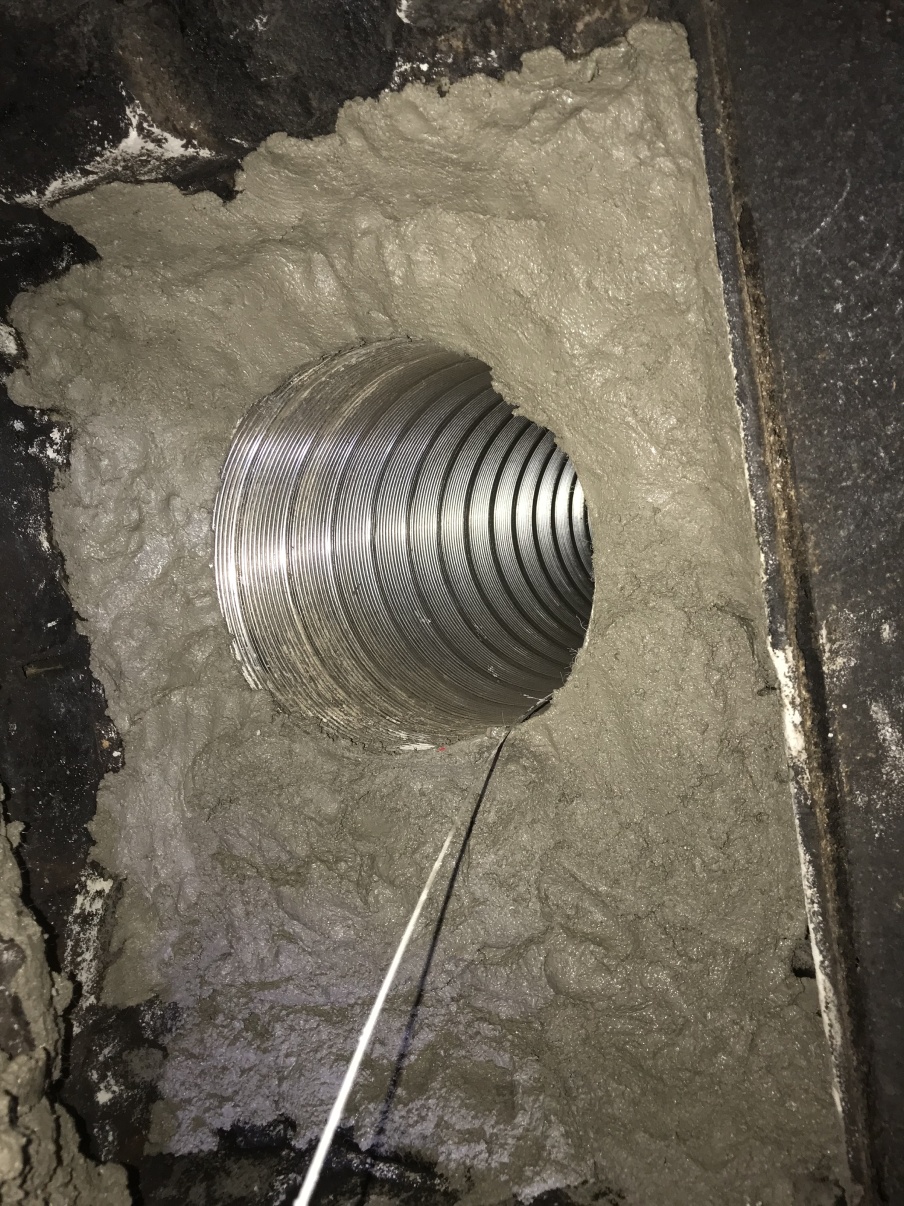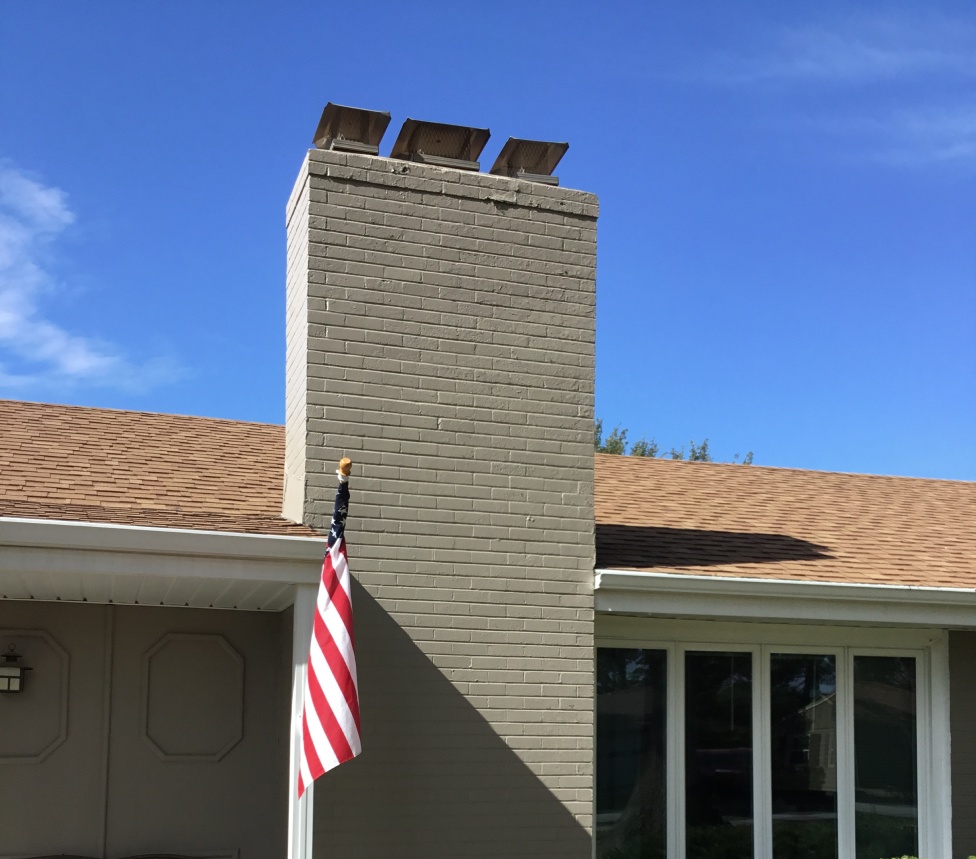Choose Sleep Easy for Chimney & Video Inspections Near Kansas City
The National Fire Protection Association (NFPA) recommends that every chimney/venting system, regardless of use, be inspected by a Chimney Safety Institute of America (CSIA) certified professional each and every year. If you’re looking for chimney inspection services near you in the Kansas City area, you’ve come to the right place. Reach us online or give us a call today.
Chimney Inspection Near Me: What’s the Difference Between a Level I & Level II Chimney Inspection?
A regularly scheduled chimney and fireplace inspection serves as a comprehensive overview of your system so that you can “sleep easy” knowing everything is as it should be. Here at Sleep Easy, we don’t want you to have to worry about the safety or health of your family, which is why we proudly offer two methods of chimney inspections, each designed to provide you with an overall evaluation of your chimney system.
- Level 1 Chimney Inspection: A level 1 chimney inspection is a visual inspection that doesn’t require any specialized tools. We’ll look at every easily accessible area of the chimney and fireplace, including the brickwork, the concrete crown at the top of the chimney, the flashing around the chimney and roof area, the chimney cap, the firebox, the smoke chamber, the damper, and as much of the flue as we can see with our high-powered flashlight.
- Level 2 Video Chimney Inspection: Level 2 inspections are just like level 1 inspections, except that we also run a camera through the flue system to look at the individual mortar joints and clay tiles. This technology allows us a more comprehensive view and makes it easy to share our findings with you – including before and after footage (photos and video) of our work.
Level 1 inspections are recommended if your chimney and the attached appliance are working normally, you haven’t made any changes, and you’ve kept up with annual inspections and routine maintenance.
We recommend level 2 inspections if you’re buying/selling the property, you’ve noticed or made big changes to your system (new liner, different fuel type, etc.), you’ve experienced a chimney fire, or it’s been a while since you had your system thoroughly evaluated.
If we find any damage during an inspection, we’ll provide you recommendations for a fix, along with an estimate for the chimney or fireplace repair services. Still have questions about what the whole process looks like? No worries – we’re always happy to help. Feel free to reach out to us online, or you can give us a call.

Is a Chimney Sweep the Same as a Chimney Inspection?
No, a chimney sweep (or chimney cleaning) is not the same service as a chimney inspection. While both provide a comprehensive and holistic view of your entire fireplace and chimney system – and are usually performed together – the two services are designed with different intentions.
So, what is the difference then? Great question.
- A chimney cleaning is exactly what it sounds like – a service in which a skilled and experienced technician utilizes special tools and equipment to sweep out the inside of the appliance, brushing away any caked-on creosote and other debris to get everything as clean as possible.
- A chimney inspection will focus on making sure everything appears in good condition and in its place. Our primary focus is on ensuring the structural soundness and overall safety of your fireplace and chimney.
No matter what kind of appliance you have or how regularly you use it, both of these preventive maintenance services are important to schedule every year. One creates a sort of system reset by removing leftover debris, while the other is diagnostic and gives you a good picture of your appliance’s health and longevity.
How Do I Know if My Chimney Is Clean & Safe for Use?
Well, unless you’re staying up-to-date on your preventive maintenance tasks, you don’t always know if your chimney is safe to use. Sure, there are some cases when it’s very clear that your system is trying to tell you that something is off, but there are also many instances where there are no signs that operation is unsafe.
This is why scheduling annual chimney inspections and sweeps is so important. It’s virtually impossible to know what’s going on inside the walls at any given time unless you have the tools and training to properly look.
Fireplaces and their chimneys are, at first glance, a rather simple structure: an appliance that safely hosts, maintains, and properly ventilates a living fire inside your home. And while the concept is straightforward, the execution requires many different components to operate properly and efficiently – most of which are hidden away within the depths of the system.
That said, please give the Sleep Easy team a call and schedule an appointment if you notice any of the following:
- Lingering odors in or around your fireplace (either mold/mildew smells or a strong essence of campfire)
- Signs of water damage (such as dripping inside the firebox or stains on the ceiling or walls surrounding your appliance)
- Signs of masonry or liner damage (like cracked brickwork, missing mortar, or liner pieces in your firebox)
- Trouble lighting a fire or issues with the fire staying lit
- Excessive smoke production entering the living space
- Different or strange system performance or behavior
Ultimately, having your chimney and fireplace regularly serviced by an experienced team of industry professionals is the only real way to know if your chimney is as clean and safe as possible. Contact someone from our team to learn more.
What Are the Most Common Issues Found During a Chimney Inspection?
What issues most often come up during a chimney inspection?
- Excessive creosote buildup. Creosote is highly flammable, and too much of it can make you more susceptible to chimney fires – which cause damage and can spread to your home.
- Cracked or damaged flue liner. The flue liner protects the chimney walls and directs smoke and gases out of the home. If it’s damaged, it can allow heat or toxic gases (like carbon monoxide) to escape into your home.
- Masonry damage. If your brickwork is cracked or your mortar joints are flaking, water can seep in, where it can trigger all kinds of damage – both to your chimney and your home.
- Chimney cap damage. The chimney cap keeps animals, debris, and rain out, so missing one (or having one that’s broken or not properly fitted) can lead to a whole slew of issues.
- Moisture damage. Signs of water or moisture damage include rusted damper assemblies, staining on walls/ceilings, mold/mildew growth, and more. Water is the most destructive element for chimneys and can lead to structural and interior damage, so attacking these issues swiftly is a must.
- Obstructions or blockages. Birds’ nests, leaves, or even collapsed flue tiles can cause blockages to form in your flue, leading to smoke and carbon monoxide backing up into your home when fires are lit.
- Damaged or missing flashing. Flashing is the metal seal between the chimney and the roof. It protects this vulnerable area, and damaged or missing flashing will lead to leaks and potential roof rot.
- Improper or outdated chimney construction. Chimneys that don’t meet current codes or were poorly built aren’t going to perform as well – and they could be putting your household at risk too.
Fortunately, we have chimney and fireplace solutions for any issues you may be experiencing. Reach out today.
Call Sleep Easy Today To Schedule Your Annual Chimney Inspection
No matter what your system needs, you can count on Sleep Easy’s team of seasoned professionals to do the job right. Tired of scouring the internet in search of the best results for “chimney inspection Kansas City” and ready to schedule with a trustworthy team of experts? Call or request an appointment online today.

If your inspection uncovered damages, trust us for fireplace repair services – our chimney and fireplace service list has you covered!
